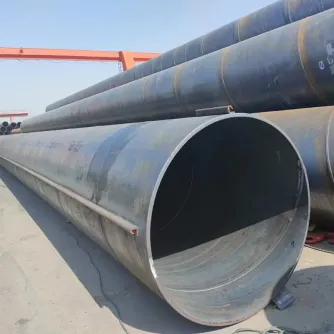-
Cangzhou Yulong Steel Co., Ltd.
-
Phone:
+86 13303177267 -
Email:
admin@ylsteelfittings.com
- English
- Arabic
- Italian
- Spanish
- Portuguese
- German
- kazakh
- Persian
- Greek
- French
- Russian
- Polish
- Thai
- Indonesian
- Vietnamese
- Zulu
- Korean
- Uzbek
- Hindi
- Serbian
- Malay
- Ukrainian
- Gujarati
- Haitian Creole
- hausa
- hawaiian
- Hebrew
- Miao
- Hungarian
- Icelandic
- igbo
- irish
- Japanese
- Javanese
- Kannada
- Khmer
- Rwandese
- Afrikaans
- Albanian
- Amharic
- Armenian
- Azerbaijani
- Basque
- Belarusian
- Bengali
- Bosnian
- Bulgarian
- Catalan
- Cebuano
- China
- China (Taiwan)
- Corsican
- Croatian
- Czech
- Danish
- Esperanto
- Estonian
- Finnish
- Frisian
- Galician
- Georgian
- Kurdish
- Kyrgyz
- Lao
- Latin
- Latvian
- Lithuanian
- Luxembourgish
- Macedonian
- Malgashi
- Malayalam
- Maltese
- Maori
- Marathi
- Mongolian
- Myanmar
- Nepali
- Norwegian
- Norwegian
- Occitan
- Pashto
- Dutch
- Punjabi
- Romanian
- Samoan
- Scottish Gaelic
- Sesotho
- Shona
- Sindhi
- Sinhala
- Slovak
- Slovenian
- Somali
- Sundanese
- Swahili
- Swedish
- Tagalog
- Tajik
- Tamil
- Tatar
- Telugu
- Turkish
- Turkmen
- Urdu
- Uighur
- Welsh
- Bantu
- Yiddish
- Yoruba

Nov . 05, 2024 02:33 Back to list
astm a333 gr6
Understanding ASTM A333 Gr. 6 A Comprehensive Overview
ASTM A333 Gr. 6 is a specification developed by ASTM International for steel pipes intended for use in low-temperature applications. This standard is crucial for industries that require reliable performance of materials under extreme conditions, particularly in sectors like oil and gas, chemical manufacturing, and power generation.
Composition and Mechanical Properties
ASTM A333 Gr. 6 pipes are made from a carbon steel alloy that provides excellent strength and toughness at low temperatures. The chemical composition typically includes elements such as manganese, phosphorus, sulfur, silicone, and copper. The additive elements are crucial as they enhance the mechanical properties of the steel. For instance, manganese helps in improving hardenability, while copper can enhance atmospheric corrosion resistance.
The minimum yield strength for ASTM A333 Gr. 6 is 40,000 psi (276 MPa) and the tensile strength ranges from 60,000 to 70,000 psi (414 to 482 MPa). These specifications make the pipes suitable for applications where high pressure and low temperatures are a concern. Additionally, the elongation percentage of Gr. 6 typically falls between 20% and 30%, depending on the diameter of the pipe, indicating good ductility, which is essential for handling thermal and mechanical stress without failure.
Industrial Applications
The primary application of ASTM A333 Gr. 6 pipes is in the transport of gases and liquids in environments where temperatures may drop significantly. This type of piping is especially prevalent in the energy sector, including the transportation of natural gas and oil. The low-temperature properties of Gr. 6 make it a popular choice for pipeline installations in arctic and sub-arctic regions, where extreme cold can pose a challenge to the integrity of standard steel pipes.
astm a333 gr6

Moreover, the specification is utilized in power plants and refineries, where the efficient transfer of fluids at low temperatures is critical for operational efficiency and safety. Engineers frequently choose ASTM A333 Gr. 6 due to its ability to maintain an adequate mechanical performance while being subjected to challenging environments.
Manufacturing Standards and Procedures
The manufacturing process of ASTM A333 Gr. 6 pipes involves several key steps to ensure the final product adheres to the required standards. The process typically includes the melting of raw materials, refining, casting, and forming. After these steps, the pipes undergo heat treatment to achieve the desired mechanical properties.
Nondestructive testing methods, such as ultrasonic testing or radiography, are often employed to detect any internal or external flaws. These testing methods are vital in guaranteeing that the pipes can withstand the service conditions for which they are intended.
Additionally, the pipes must be marked according to ASTM specifications, which includes details about the grade, manufacturer, and heat number. This marking aids in traceability and quality assurance.
Conclusion
In summary, ASTM A333 Gr. 6 is an essential standard in the realm of low-temperature steel piping. Its robust mechanical properties, combined with a careful manufacturing process, make it a reliable choice for critical applications in various industries. As infrastructure development continues to evolve, the demand for ASTM A333 Gr. 6 pipes is likely to grow, especially with increasing efforts to explore and utilize energy resources in challenging environments. Understanding this specification will be pivotal for engineers and professionals involved in the design and implementation of piping systems that require both resilience and performance.
Latest news
-
ANSI 150P SS304 SO FLANGE
NewsFeb.14,2025
-
ASTM A333GR6 STEEL PIPE
NewsJan.20,2025
-
ANSI B16.5 WELDING NECK FLANGE
NewsJan.15,2026
-
ANSI B16.5 SLIP-ON FLANGE
NewsApr.19,2024
-
SABS 1123 FLANGE
NewsJan.15,2025
-
DIN86044 PLATE FLANGE
NewsApr.19,2024
-
DIN2527 BLIND FLANGE
NewsApr.12,2024
-
JIS B2311 Butt-Welding Fittings LR/SR 45°/90° /180°Seamless/Weld
NewsApr.23,2024











